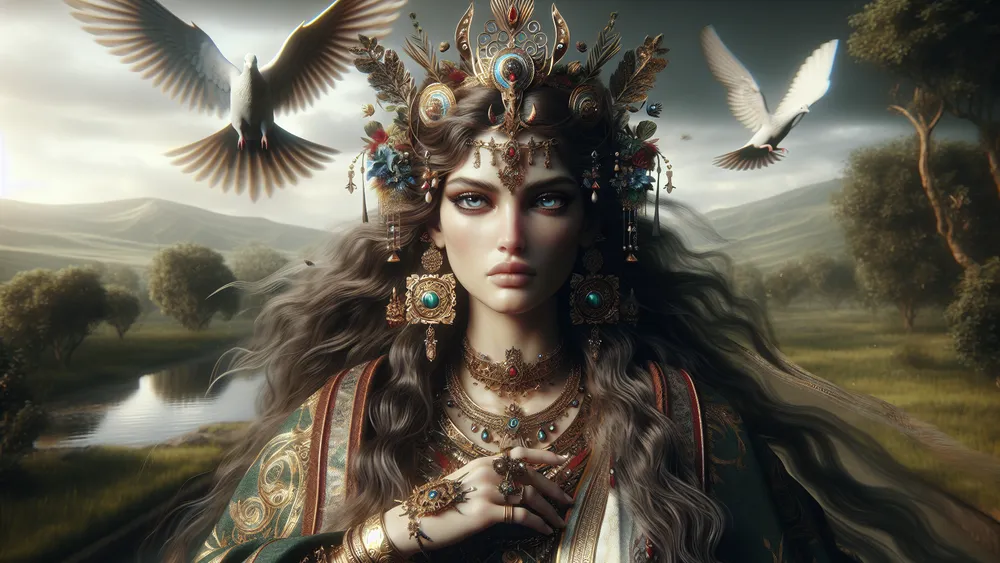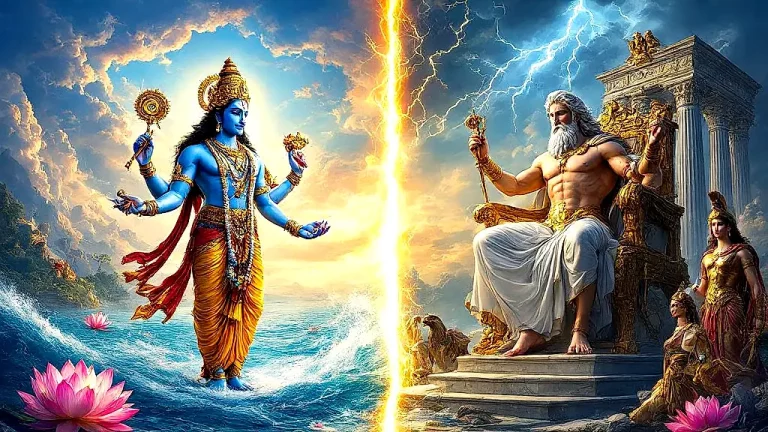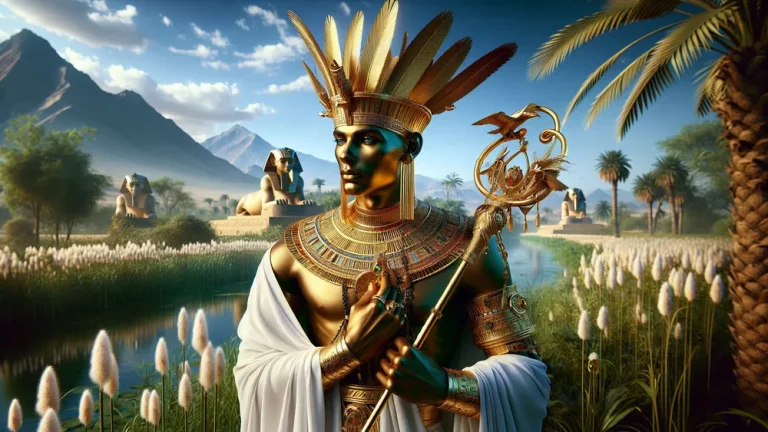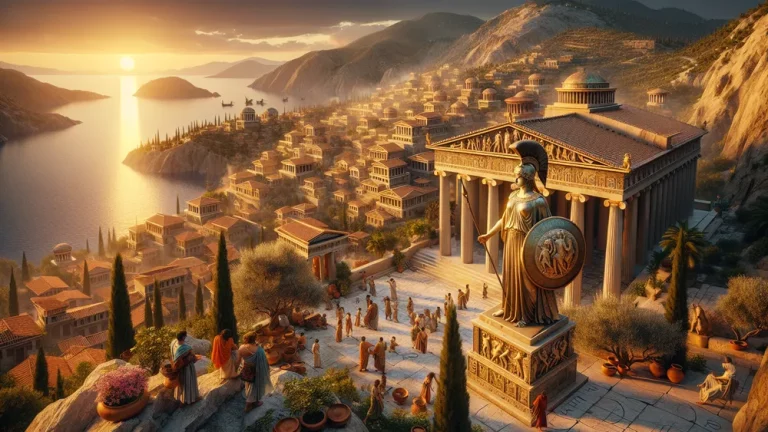Astarte: Ancient Near Eastern Goddess Of Love And War
Astarte, an ancient Near Eastern goddess, is all about love and war. She’s a fascinating figure, worshipped by many cultures like the Canaanites, Phoenicians, and Egyptians. Her influence? It’s huge and stretches across centuries and regions. In this blog post, we’re diving into her story. We look at her origins, her history, and how people saw her.
Key Points:
- Astarte is an ancient Near Eastern goddess of love and war.
- She was worshipped by Canaanites, Phoenicians, and Egyptians.
- Astarte’s story shifts across cultures and evolves over time.
- Depicted in art and sculpture with symbols like lotus flowers and crowns.
- She is linked to love, fertility, and war in various myths and texts.
- Astarte’s worship spread to Egypt, the Levant, and is mentioned in the Bible.
- Astarte influenced other deities and had special symbols like lions and doves.
We also check out her art and symbols. Plus, we explore her roles as a goddess of love and a fierce warrior. By looking at old texts and art, we get a full picture of Astarte. She’s not just a goddess; she’s a legend in ancient mythology.
Who is Astarte?
So, who exactly is Astarte? Let’s dive in and find out.
Origins and Historical Background
Alright, let’s rewind a bit. Where does Astarte’s story actually begin?
Early Worship and Cultural Significance
Astarte’s story starts way back in the ancient Near East, especially in places like Canaan and Phoenicia. People in these regions see her as super important, a goddess of both love and war. In Canaan, they worship her alongside other gods, linking her to fertility and nature’s cycles.
Over in Phoenicia, she’s a big deal too, possibly tied to the sea because of their coastal life. And then there’s Egypt, where she blends into their pantheon, hanging out with goddesses like Hathor and Isis. As time goes on, how people worship Astarte changes. She becomes more of a warrior goddess later on.
- Canaan: Tied to fertility and nature.
- Phoenicia: Possibly linked to the sea.
- Egypt: Blends with goddesses like Hathor and Isis.

So, you can see how her story shifts and adapts, influenced by the different cultures that honor her.
Astarte’s story evolves and changes, influenced by the various cultures that revere her across Canaan, Phoenicia, and Egypt, where she is connected to fertility and nature, possibly tied to the sea, and blends with goddesses like Hathor and Isis, ultimately transforming into a warrior goddess over time.
Astarte in Ugaritic Texts
In the ancient writings from Ugarit, Astarte pops up as a pretty big deal. These texts paint her as a powerful goddess, juggling both love and war. You see her in various myths, showing off her dual nature. Sometimes, she’s a fierce warrior. Other times, she’s all about fertility and love.
These Ugaritic texts really help us get a grip on Astarte’s mythology because they dive deep into her traits and actions. They also show just how important she is among the gods worshipped in Ugarit.
- References: Astarte shows up as a major deity.
- Role and Attributes: She’s a powerful goddess of love and war.
- Significance: These texts are key to understanding her mythology.
Iconography and Symbols
Alright, let’s jump into how people actually see Astarte and the symbols tied to her. This will give us a clearer picture of who she is.
Depictions in Art and Sculpture
Astarte shows up in ancient art and sculpture as a figure of beauty and power. You often see her standing or seated, sometimes holding symbols like a staff or a lotus flower (which stand for fertility and life). She usually wears a crown or headdress, possibly with horns or a crescent moon, showing off her divine status.
In some cultures, she even has wings, highlighting her role as a warrior goddess. Her look changes depending on the region. For example, in Egypt, she might have attributes similar to Hathor, while in Phoenicia, she could be linked to maritime symbols.

- Common Representations: Standing or seated, holding a staff or lotus flower.
- Symbolism: Crown or headdress with horns or crescent moon, possibly wings.
- Cultural Variations: Egyptian attributes similar to Hathor, Phoenician maritime symbols.
Sacred Animals and Symbols
Astarte has some special animals and symbols tied to her that really stand out in her worship and mythology. You often see the lion with her, which shows off her strength and power. Doves are another big one; they symbolize love and fertility, making them perfect for a goddess of love. And then there’s the horse, which represents mobility and possibly war, especially in places where she’s seen as a warrior goddess.
These animals and symbols pop up a lot in rituals and art, each one highlighting a different side of her divine nature.

| Animal/Symbol | Significance |
|---|---|
| Lion | Strength and power |
| Dove | Love and fertility |
| Horse | Mobility and possibly war |
Roles and Attributes
Alright, let’s jump into the different roles and attributes that make Astarte so intriguing. We’ll see how she embodies both love and war in fascinating ways.
Goddess of Love and Fertility
Astarte stands out as a goddess of love and fertility, bringing life and procreation into focus. People honor her with rituals that include flowers, incense, and small animal sacrifices (all meant to gain her favor for fertility and love). In some temples, they even practice sacred prostitution (where priestesses perform ritualistic sexual acts to honor her).
Her influence doesn’t stop there; she also connects to other cultures. For example, the Greek goddess Aphrodite and the Roman goddess Venus share similar traits of love and fertility, showing just how far Astarte’s reach goes.
Warrior Goddess
Astarte also stands out as a warrior goddess, showing off her strength and combat skills. In various myths and stories, she comes across as a fierce and powerful figure, often leading battles and protecting her followers. One story has her defeating enemies with her mighty weapons and strategic prowess (really showing off her martial abilities).
This warrior side of Astarte influences her worship a lot; people often call on her for protection and victory in conflicts. Her iconography reflects this too, with images showing her holding weapons like spears and shields (symbols of her warrior nature).
Astarte is a warrior goddess known for her strength and combat skills, leading battles and protecting her followers while being called upon for protection and victory in conflicts.
Astarte in Different Cultures
Now, let’s dive into how Astarte’s influence spreads across various cultures. We’ll see how different regions embrace and adapt her unique attributes.
Astarte in Egypt
Astarte finds her way into Egyptian mythology during the New Kingdom period (around 1550-1070 BCE). She connects closely with other Egyptian deities like Isis and Hathor (both goddesses of love and fertility). Egyptians often show her riding a horse and holding weapons, really highlighting her warrior side. You can find significant temples and sites dedicated to her, like the temple of Astarte at Tanis (in the Nile Delta) and various smaller shrines throughout Egypt.
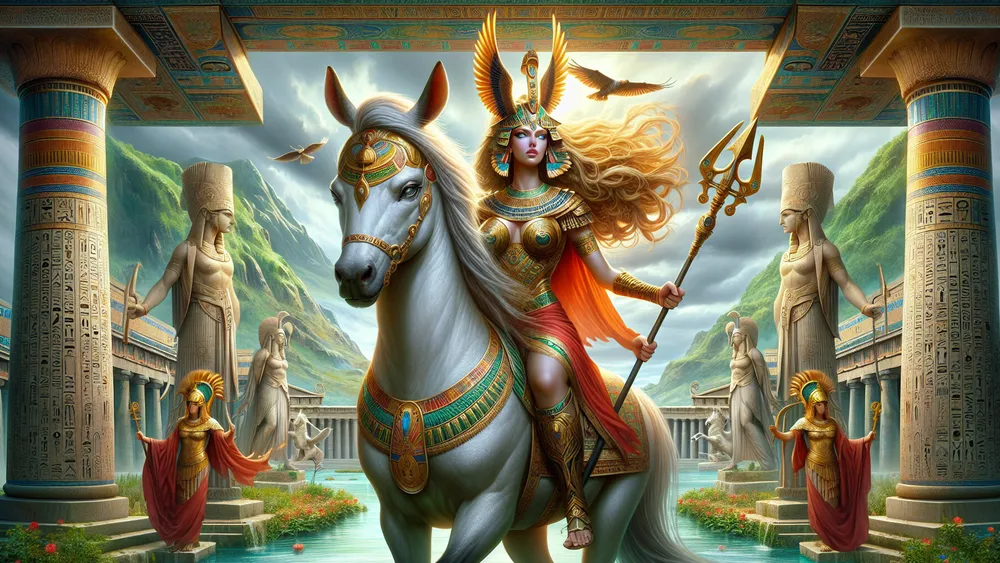
These places show just how important she is and how much people venerate her in Egyptian culture.
Astarte in the Levant
In the Levant, Astarte’s worship really takes off, especially in places like Canaan and Phoenicia. She plays a big role as a goddess of both love and war, showing off her dual nature. In Canaan, people venerate her alongside other deities like Baal and Anath (both big names in Canaanite mythology).
Over in Phoenicia, she ties closely to fertility and maritime trade (key parts of Phoenician life). Local cultures shape her mythology and worship practices, adding unique touches like special rituals and symbols. For example, Phoenicians often show her with maritime symbols (like ships and sea creatures), highlighting her strong connection to the sea.
Astarte in the Bible
The Bible talks about Astarte, often calling her Ashtoreth (a different version of her name). You find these mentions mostly in the Old Testament, especially in books like Judges and Kings. She usually gets a bad rap, linked to foreign gods and idolatry (things the Israelite prophets really frown upon).
For instance, in 1 Kings 11:5, King Solomon catches flak for worshipping Ashtoreth, the goddess of the Sidonians. These references show the clash between worshipping Yahweh and the polytheistic practices of nearby cultures.
Her mention in biblical texts highlights the historical and cultural significance of Astarte’s worship in the ancient Near East, reflecting the broader religious landscape and conflicts of that time.
Astarte, known as Ashtoreth in the Bible, is often criticized for being worshipped alongside foreign gods and idolatry which conflicts with the monotheistic beliefs of the Israelites.
Pantheon of All the Near Eastern Mythology Gods
The Near Eastern pantheon features a mix of gods and goddesses, each with their own unique stories and roles. From Astarte to Baal, these deities shape ancient civilizations’ religious and cultural landscapes.
FAQs
1. Who was Astarte’s consort?
Astarte’s consort was often identified as the god Baal in various ancient Near Eastern cultures.
2. How did Astarte influence other deities?
Astarte influenced other deities by merging attributes and roles with them, thereby shaping their characteristics and worship practices across different cultures.
3. What are the main symbols associated with Astarte?
The main symbols associated with Astarte include the lion, the horse, the sphinx, and the dove.
4. How did Astarte’s worship spread across different regions?
Astarte’s worship spread across different regions through trade, cultural exchanges, and the expansion of empires that adopted and adapted her mythology.

